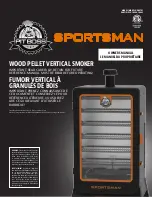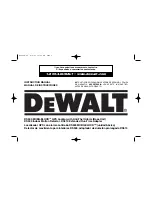
WARNING:
Smoke alarm installation must be in accordance with the requirements of any
national code and any local codes that may apply.
1. Remove the mounting plate by turning counterclockwise at the back of the smoke alarm.
(To later engage tamper-resist feature, twist out and set aside one of the pins molded into plate.
Both pins are exactly the same.)
2. Install the mounting plate to ceiling or wall with mounting screws.
3. Lift open battery pocket door.
4. Connect new 9-volt battery to
battery connector inside battery pocket. Be sure battery is securely connected. Red LED may
blink briefly when battery is installed.
5. Close battery pocket door, snapping it into place.
6. Position smoke alarm to mounting plate and turn clockwise to lock into place. To engage tamper-resist feature, insert pin into
notch on edge of smoke alarm after alarm is properly positioned in base.
7. Push test button to test smoke alarm. See
TESTING THE SMOKE ALARM.
OPERATING YOUR SMOKE ALARM
Once the smoke alarm has been installed A RED indicator light (LED) should flash approximately once a minute to indicate the
battery is healthy and the unit is operating properly.
If smoke is detected, the unit will emit a load pulsating alarm and a RED indicator light (LED) will be flashing quickly until the
air is clear.
The “HUSH” feature can mute the detector if it has been advertently triggered by holding down the “TEST/HUSH” button for a
few seconds and then release it. The smoke alarm will be muted 10 minutes and then reset into normally mode after this period.
NOTE-
If the smoke density increases during this time the smoke alarm will be triggered into alarm again.
TESTING THE SMOKE ALARM
1. Test each smoke alarm to be sure it is installed correctly and operating
properly.
2. The push-to-test button accurately tests functions. Do not use an open
flame to test this smoke alarm. You may ignite and damage the smoke
alarm or your home.
3. Test smoke alarms weekly and upon returning from vacation or when no
one has been in the household for several days.
4. Stand at arm’s length from the smoke alarm when testing.
TEST ALL SMOKE ALARMS WEEKLY BY DOING THE FOLLOWING:
1. Firmly push the TEST button, and the smoke alarm will sound a loud beep.
The alarm will stop sounding after releasing the TEST button.
2. If smoke alarm does not sound, please retest the smoke alarm.
DANGER:
If the alarm sounds, and smoke alarm is not being tested, the smoke alarm is sensing smoke. THE
SOUND OF THE ALARM HORN REQUIRES YOUR IMMEDIATE ATTENTION AND ACTION.
NUISANCE ALARMS
If there is a nuisance alarm simply press the test/hush button on the alarm to silence the unit for 10 minutes. If, when the alarm
goes off, there is no sign of smoke, heat or noise to indicate that there is a fire, you should get your family into a safe place,
before you start investigating.
Check the house carefully in case there is a small fire smoldering somewhere. Check whether there is some source of smoke or
fumes, for example cooking fumes being drawn past the smoke alarm by an extractor.
























